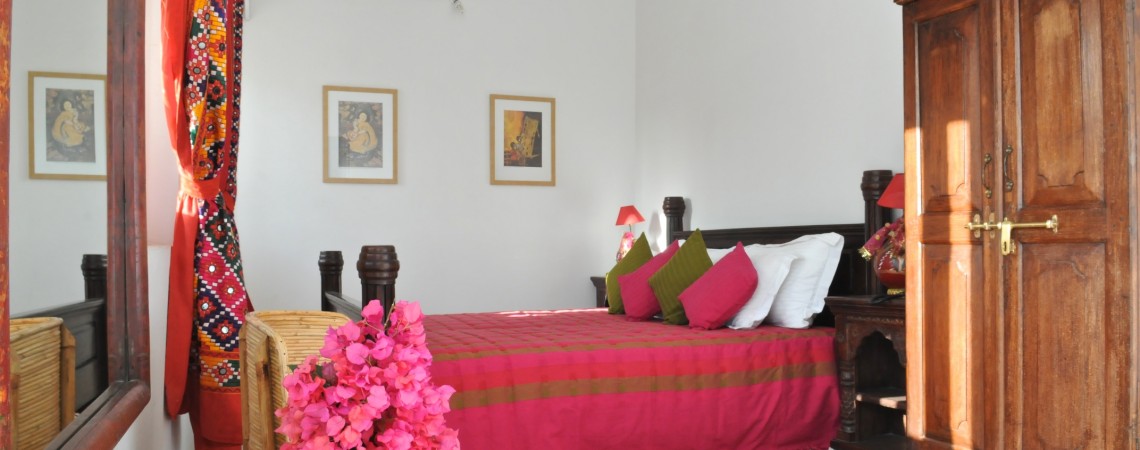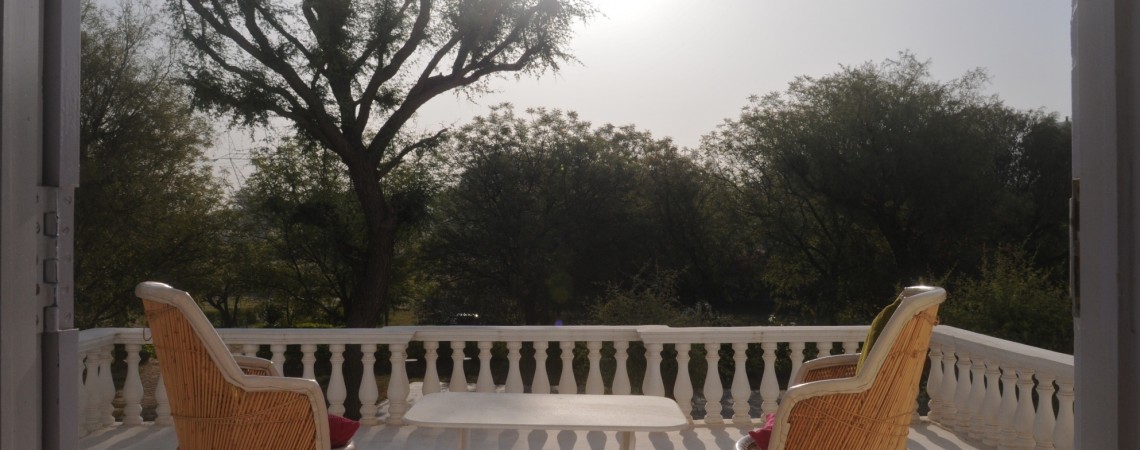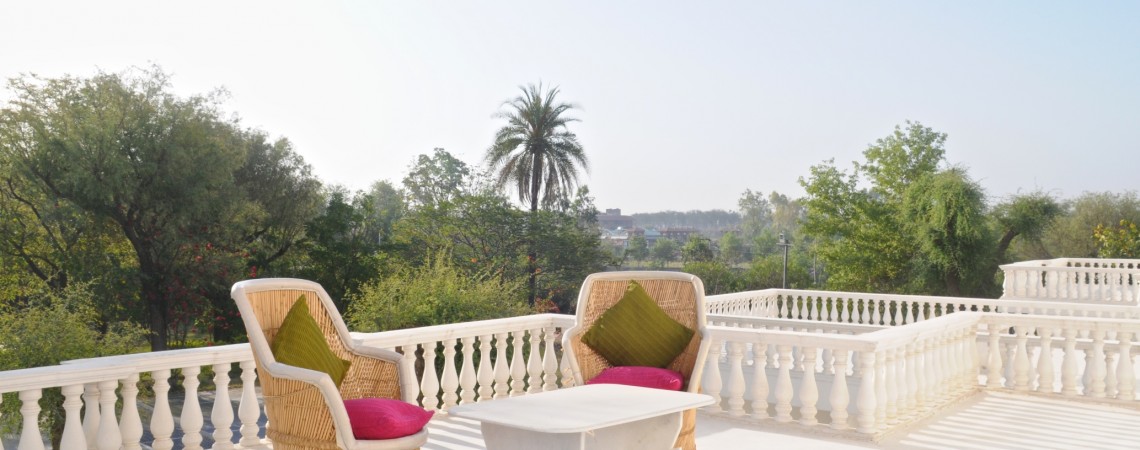Kachnaar
Named after the flower of the Kachnaar tree, this small cozy upper level room with king bed has mirror-worked embroidered soft furnishings in brilliant shades of red and hot pink. The room is poised between the great outdoors. It has its own large private sun terrace on one side, its atmosphere infused with the aroma of nearby flowering plants. From this terrace facing east and north, one has a view of the front gardens and the rising sun, and a vista of the trees and fields extending beyond in the north. On the other side is an open sun deck overlooking the pool, from where one can enjoy the afternoon sun in the west.
Hot pink and red are the colours that form the core theme of the Kachnar room, with flashes of olive green as the counterpoint. The furnishing fabrics are all hand woven, and the curtains have the added embellishment of embroidered mirror work done by the nomadic camel and cattle herding tribal women to western Rajasthan. A full length traditional wood carved mirror hanging on one of the walls gives an impression of space within this room that is in itself somewhat smaller than the other guest rooms, but has the unique features of the two terraces mentioned earlier.
The room was named for the three Kachnar trees growing just outside, with their branches drooping over the wall of the sun terrace. During the months from late winter until early summer, the branches would be dense with flowers. Stepping out in the mornings, one would be greeted with the sight of the fragrant pink, crimson and mauve blossoms carpeting the terrace floor; it was an exquisite sight. Sadly, two of the trees crashed into that side of the haveli during a particularly fierce summer storm a couple of years ago, causing considerable damage to the structure; reminding us of the reason why traditionally in Rajasthan, trees are not planted too close to dwellings. In fact, the old saying here is that trees around a house must be planted only where the shadow of the house ends.
Kachnar is the Hindi name for the tree (Sanskrit: Kanchanara, sometimes shortened to Kanchan) while its English names are Indian Orchid (for its orchid-like flowers), and Mountain Ebony (for the deep brown bark). Botanically it belongs to the Fabacea family, and was named Bauhinia variegate after 16th Century herbalists Jan and Caspar Bauhin who were twin-brothers. The tree is easily recognized by the peculiar shape of its leaves, each constituting of two identical halves, folded at the midrib. When opened at the fold and spread, the impression is that of a camel’s foot. Hence another one of its names, Camel Foot tree.
Found across the sub-continent from Burma in the east to Afghanistan in the west, the Kachnar is native to south Asia and also parts of south east Asia, being equally at home in the hot tropical plains all the way up to the cool middle Himalaya. A medium sized deciduous ornamental tree, the Kachnar has also been prized by traditional Ayurvedic and tribal healers for the many curative and health promoting properties of its stem bark, flowers, and leaves. The buds are additionally used to make delicious vegetarian dishes.
The health benefits of the tree are particularly notable, for which reason the various parts of the tree – particularly its deep coloured bark and large leaves – are used extensively in Ayurvedic medicine and by tribal communities in Rajasthan (Rajasthan has a huge tribal population, almost 10 per cent of the entire tribal population of India):
Kachnar extracts have been found to have anti-diabetic activity (the presence of insulin like proteins in the leaves of the plant); anti-ulcer activities (decrease the amount of gastric acids, thus aiding in healing of ulcers); protection of liver (Kachnar extracts have been found to display considerable hepatoprotective or liver protecting properties); can control tumours (apart from possible tumour control, the extracts of Kachnar have also been found to possess chemopreventive or cancer preventive properties); nephroprotective properties: ( research into Kachnar extracts has shown that they possess protective properties against nephrotoxicity; nephrotoxicity is the accumulation and action of certain chemicals on the nephrons which can result in oxidative stress and damage to nephrons, and the extracts of Kachnar have been found to display nephroprotective properties by shielding nephrons from such attack); wound healing properties (the extracts, when administered on wounds have shown improved and faster healing when compared to controlled wounds; the wound healing was found comparable to standard medicines).






